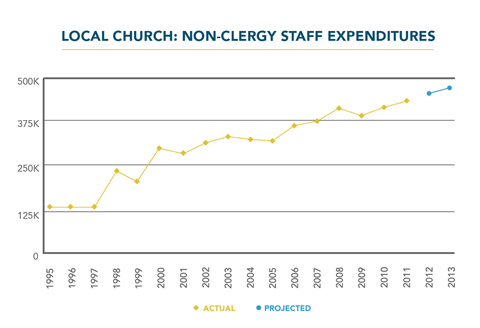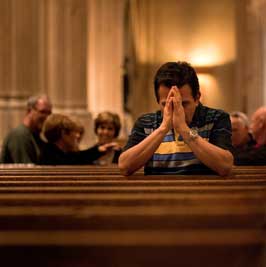Case Study #3
 The subject church began the program in October of 2013 and was assigned a Benchmark Budget repair fund target of $42,000. Donors raised $30,000, a shortfall of $12,000 from the targeted goal. The targeted increase in worship attendance at the $42,000 funding level was predicted to be 28 attendees. The overall total targeted worship attendance at the end of Year 3 was 498. The average worship attendance at the end of Year 3 was 418 — 16.0% below the target. The predicted giving level to the operating budget at the end of Year 3 was $1,103,000. Actual giving to the operating budget at the end of Year 3 totaled $998,7000 — 10.4% below the predicted value.
The subject church began the program in October of 2013 and was assigned a Benchmark Budget repair fund target of $42,000. Donors raised $30,000, a shortfall of $12,000 from the targeted goal. The targeted increase in worship attendance at the $42,000 funding level was predicted to be 28 attendees. The overall total targeted worship attendance at the end of Year 3 was 498. The average worship attendance at the end of Year 3 was 418 — 16.0% below the target. The predicted giving level to the operating budget at the end of Year 3 was $1,103,000. Actual giving to the operating budget at the end of Year 3 totaled $998,7000 — 10.4% below the predicted value.
An evaluation of the program upon completion revealed some significant findings which may well have contributed to the program shortfall relative to the predicted outcomes. Among the findings it was acknowledged that the congregation did not participate in the discernment process. Nor were the Benchmark spending decisions made through a committee of laity. The single program funded for the effort — a new staff position of nurse to minister to the elderly in the community — was established. The position was left vacant after several months of service. Funds were redirected to fund the transition of a part time youth director to full time. These shifts in resource allocation did result in slow but steady growth in attendance among children and youth. The operating budget fully absorbed the Benchmark Budget in Year 2, leaving the donor group with no function. We have found that the most successful programs fully engage the congregation in the discernment process, include lay committees for budget allocation decisions and encourage donor involvement throughout the course of the 3 year program. It is critical to get input and support from as many as possible from congregation members to influential committees and donors. Creative solutions are best developed at the congregation level as they know best what will prove successful.






